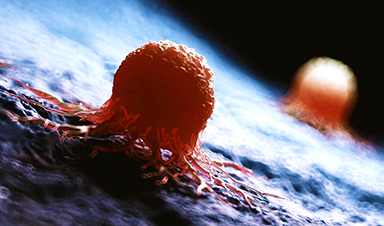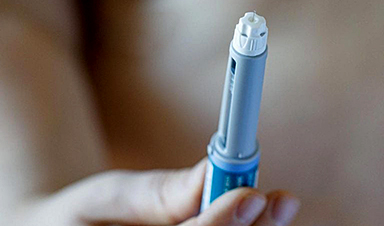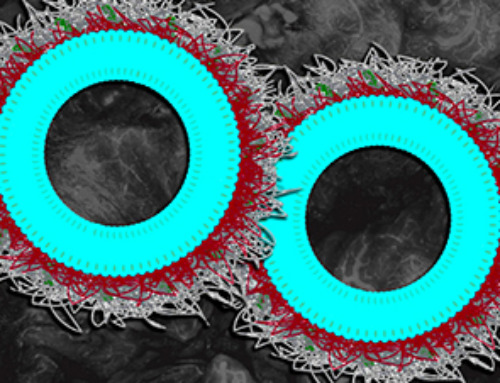A new immunotherapy releases cancer-killing cytokines only within the tumor.
Researchers at the University of California San Francisco (UCSF) have developed a new T cell-based immunotherapy that selectively targets cancer cells, producing a powerful anti-cancer cytokine specifically when it encounters tumors. This therapy effectively eliminated melanoma and pancreatic cancer in mice, with minimal side effects. This represents a promising new approach for treating these and other difficult-to-treat cancers.
The cells deliver IL-2, a naturally-occurring inflammatory molecule produced by the immune system that has powerful anti-cancer effects. It supercharges T cells, which are immune cells that can eliminate cancer cells and fight infection. IL-2 potent anti-cancer effects have been long-known, however, systemic administration of IL-2 has been limited due to the severe side effects it can cause.
In the study, which was recently published in the journal Science, the researchers were able to keep the cytokine contained within the cancer by programming the tumor-infiltrating T cells to make their own IL-2 when they recognized a cancer cell.
Slipping past the barriers
Cellular therapies have been highly effective against many blood cancers, where the cells are easily accessible because they are floating freely. Solid tumors, however, build multiple defensive walls that prevent therapeutic T cells from entering. And even if the cells do get into the tumor, they often tire out before they’re able to finish off the cancerous cells.
Since the 1980s, oncologists have known that high doses of IL-2 enable T cells to overcome these barriers, and the cytokine has been used as a cancer therapy in challenging cancer cases. But simply infusing patients systemically with IL-2 can cause high fever, leaky blood vessels, and organ failure.
Lim and lead author Greg Allen, MD, Ph.D., adjunct assistant professor of medicine and a fellow at the Cell Design Institute, aimed to tame IL-2’s effects by engineering cells that enhance the cancer-killing immune response only where it’s needed: in the tumor.
They chose to go after notoriously difficult-to-treat tumors, like those of the pancreas, ovary, and lung, that form nearly iron-clad barriers against T cells.
To engineer cells T cells that could sense when they were in the tumor, the researchers used a synthetic Notch (or synNotch) receptor, a flexible type of molecular sensor, which Lim’s lab developed several years earlier. These receptors span the cell membrane, with ends that protrude both inside and outside the cell. The outside portion recognizes and binds to tumor cells, triggering the inside portion to set the production of IL-2 in motion.
The team tested the synNotch cells on a number of deadly tumors, including melanoma and pancreatic cancer, and found that the cells worked exactly as planned.
“We were able to design these therapeutic cells to slip past the tumor’s defensive barriers. Once in the tumor, they could establish a foothold, and begin effectively killing cancerous cells,” said Allen. “We got on top of these tumors and in some cases cured them.”
A Positive-Feedback Circuit
The approach owes its success to engineering a circuit in the cell that amplifies the immune response in a controlled way. This induces the cell to produce IL-2 only under the specific conditions it’s programmed to recognize.
“This induction circuit is really a positive-feedback loop, an important element behind making these designer T cells that are able to operate so effectively,” Allen said.
The circuit begins when the synNotch receptor tells the T cell to make IL-2. That IL-2 feeds back on the cell, causing it to divide, in turn creating more cells that make even more IL-2. The entire process is confined within the tumor, protecting the rest of the body from harm.
Allen, who is both a researcher and an oncologist, hopes to begin testing the therapeutic approach in clinical trials with pancreatic cancer patients in 2024.
“The most advanced immunotherapies are just not working in a lot of these difficult solid tumors,” he said. “We think this type of design can overcome one of the major barriers and do it in a way that’s safe and free of side effects.”
News
Concerning New Research Reveals Colon Cancer Is Skyrocketing in Adults Under 50
Colorectal cancer is striking younger adults at alarming rates, driven by lifestyle and genetic factors. Colorectal cancer (CRC) develops when abnormal cells grow uncontrollably in the colon or rectum, forming tumors that can eventually [...]
Scientists Discover a Natural, Non-Addictive Way To Block Pain That Could Replace Opioids
Scientists have discovered that the body can naturally dull pain through its own localized “benzodiazepine-like” peptides. A groundbreaking study led by a University of Leeds scientist has unveiled new insights into how the body manages pain, [...]
GLP-1 Drugs Like Ozempic Work, but New Research Reveals a Major Catch
Three new Cochrane reviews find evidence that GLP-1 drugs lead to clinically meaningful weight loss, though industry-funded studies raise concerns. Three new reviews from Cochrane have found that GLP-1 medications can lead to significant [...]
How a Palm-Sized Laser Could Change Medicine and Manufacturing
Researchers have developed an innovative and versatile system designed for a new generation of short-pulse lasers. Lasers that produce extremely short bursts of light are known for their remarkable precision, making them indispensable tools [...]
New nanoparticles stimulate the immune system to attack ovarian tumors
Cancer immunotherapy, which uses drugs that stimulate the body’s immune cells to attack tumors, is a promising approach to treating many types of cancer. However, it doesn’t work well for some tumors, including ovarian [...]
New Drug Kills Cancer 20,000x More Effectively With No Detectable Side Effects
By restructuring a common chemotherapy drug, scientists increased its potency by 20,000 times. In a significant step forward for cancer therapy, researchers at Northwestern University have redesigned the molecular structure of a well-known chemotherapy drug, greatly [...]
Lipid nanoparticles discovered that can deliver mRNA directly into heart muscle cells
Cardiovascular disease continues to be the leading cause of death worldwide. But advances in heart-failure therapeutics have stalled, largely due to the difficulty of delivering treatments at the cellular level. Now, a UC Berkeley-led [...]
The basic mechanisms of visual attention emerged over 500 million years ago, study suggests
The brain does not need its sophisticated cortex to interpret the visual world. A new study published in PLOS Biology demonstrates that a much older structure, the superior colliculus, contains the necessary circuitry to perform the [...]
AI Is Overheating. This New Technology Could Be the Fix
Engineers have developed a passive evaporative cooling membrane that dramatically improves heat removal for electronics and data centers Engineers at the University of California San Diego have created an innovative cooling system designed to greatly enhance [...]
New nanomedicine wipes out leukemia in animal study
In a promising advance for cancer treatment, Northwestern University scientists have re-engineered the molecular structure of a common chemotherapy drug, making it dramatically more soluble and effective and less toxic. In the new study, [...]
Mystery Solved: Scientists Find Cause for Unexplained, Deadly Diseases
A study reveals that a protein called RPA is essential for maintaining chromosome stability by stimulating telomerase. New findings from the University of Wisconsin-Madison suggest that problems with a key protein that helps preserve chromosome stability [...]
Nanotech Blocks Infection and Speed Up Chronic Wound Recovery
A new nanotech-based formulation using quercetin and omega-3 fatty acids shows promise in halting bacterial biofilms and boosting skin cell repair. Scientists have developed a nanotechnology-based treatment to fight bacterial biofilms in wound infections. The [...]
Researchers propose five key questions for effective adoption of AI in clinical practice
While Artificial Intelligence (AI) can be a powerful tool that physicians can use to help diagnose their patients and has great potential to improve accuracy, efficiency and patient safety, it has its drawbacks. It [...]
Advancements and clinical translation of intelligent nanodrugs for breast cancer treatment
A comprehensive review in "Biofunct. Mater." meticulously details the most recent advancements and clinical translation of intelligent nanodrugs for breast cancer treatment. This paper presents an exhaustive overview of subtype-specific nanostrategies, the clinical benefits [...]
It’s Not “All in Your Head”: Scientists Develop Revolutionary Blood Test for Chronic Fatigue Syndrome
A 96% accurate blood test for ME/CFS could transform diagnosis and pave the way for future long COVID detection. Researchers from the University of East Anglia and Oxford Biodynamics have created a highly accurate [...]
How Far Can the Body Go? Scientists Find the Ultimate Limit of Human Endurance
Even the most elite endurance athletes can’t outrun biology. A new study finds that humans hit a metabolic ceiling at about 2.5 times their resting energy burn. When ultra-runners take on races that last [...]





















